What’s the deal with floorspace?
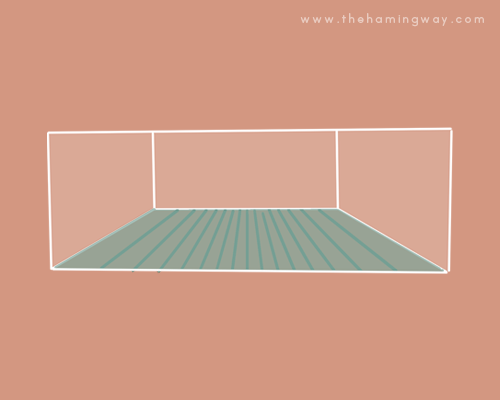
What is floorspace?
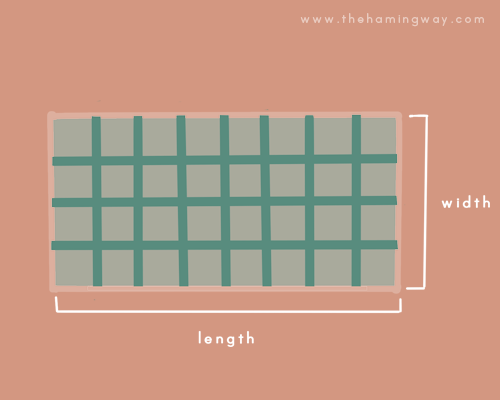
Floorspace is the surface area of the enclosure. To get the floorspace of a rectangular enclosure, you need to multiply the length x width of the inner measurements of the enclosure. In studies done on hamsters, it has been found that enclosures with bigger floorspace usually result in the hamster showing less boredom behaviors. Hamsters with smaller floorspace are also more likely to get sicker.
If you want to convert from square centimeters to square inches follow this formula:
Square Centimeters = Square Inch * 6.452
Square Inches = Square Centimeters / 6.452
Do levels or a separate enclosure count towards floorspace?
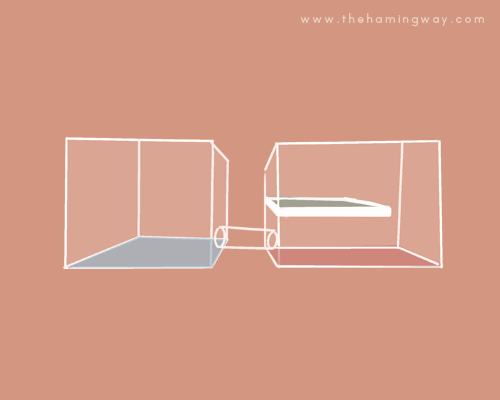
Unfortunately levels, or separate enclosures do not add up to your total floorspace. That is because the surface area has already been broken through the divider. Each separate enclosure or level does have its own floorspace. It is best to have a large enclosure with unbroken floorspace. You can have levels and connected enclosures as long as the main enclosure is already large enough.
Why Inner Dimensions?
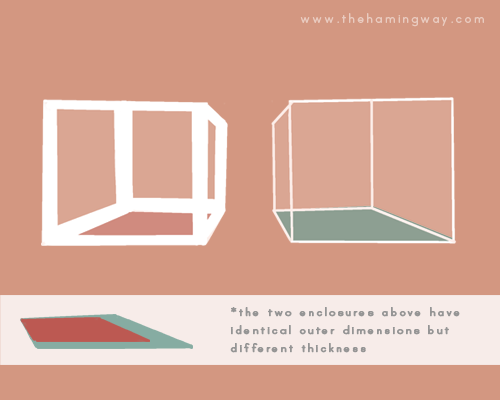
We use the inner dimensions because that is what your hamster can run on and live on. Computing the floorspace from the outside of your enclosure will give you a less accurate reading. There wouldn’t be a huge difference if the outside of the enclosure was made of a thin material. However, because most enclosures
But what about bin cages?
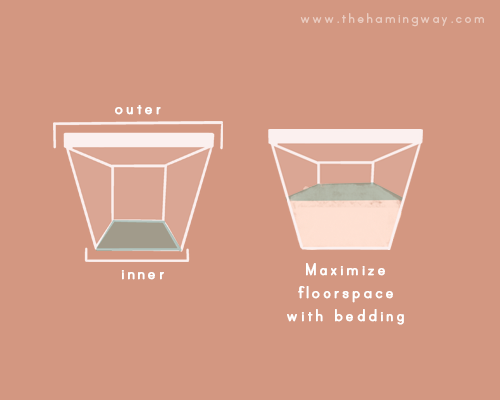
Bin cages aren’t as straightforward as regular rectangular enclosures. The measurements of bins usually listed are the outer dimensions, which is the largest size possible. For a more accurate floorspace, you need to get the internal dimensions which is the minimum area of the bin.
To maximize your bin cage, try filling up more of the area with bedding. You would get a bigger surface area from the middle of the bin than you would with less bedding. More bedding is also so much better for hamsters!
Outer vs Inner
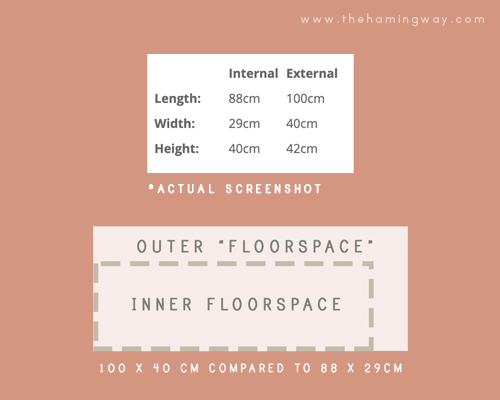
This is an actual screenshot of the dimensions of the 133L from the PlasticBoxShop. As you can see, there is a significant difference from the outer dimensions of the bin compared to the inner dimensions. You wouldn’t even realistically be able to get close to the outer dimensions unless you filled the entire bin up with bedding. Even then, there’s a huge chance it’s still under 4000sqcm (620 sqin). This means that this bin isn’t really a suitable main enclosure for any hamster.
What about other irregularly shaped enclosures?
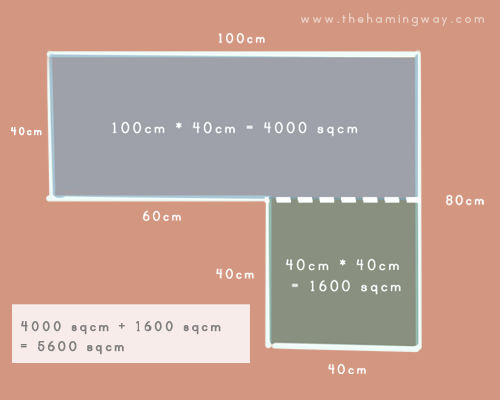
Other irregularly shaped enclosures would be harder to compute for. However, what we can do is break up the enclosure into manageable shapes and then compute for it there. Rectangular or box-like shapes are the easiest ways to do it. However, there are many formulas for the other shapes. If you’re really into geometry, you can look up the area formula for that particular shape.
What about REALLY irregular cages?
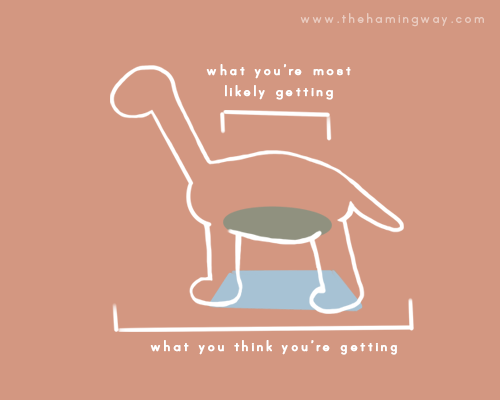
This example is based off of a real cage released by PetSmart. The outer dimensions listed on the box is probably what you think you’re getting, however, the actual livable floorspace of the hamster is very small, thus making this an unsuitable enclosure.
For an easier way to get a rough idea of a very irregular cage you can draw a rectangle at the base of the enclosure. This is not an accurate measurement, but it does give you a rough idea of the floorspace. Once again, if you want to get into the geometry, you can definitely find a formula to compute for the exact floorspace.
Minimums
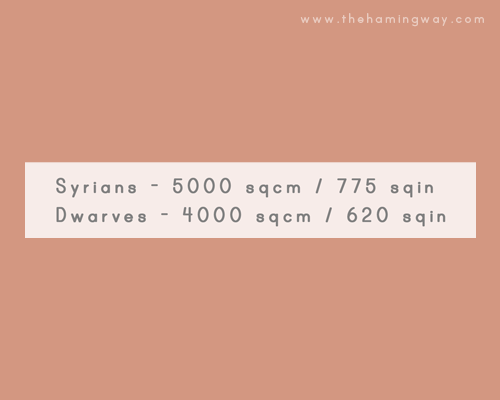
The minimum floorspace requirement for Syrians is 5000 sqcm (775 sqin) and the minimum requirement for Dwarves is 4000 sqcm (620 sqin). These minimums were based off of studies done on hamsters and floorspace.
We wanted to share the floorspace minimums that we recommend everyone follow. While there is a minimum, there is no maximum and you can absolutely give your hamster as much space beyond the minimum as your heart desires. Consider that hamsters have as much space as they can claim in the wild.
With floorspace alone however, Hamsters will still very much get bored. You need a combination of floorspace, deep substrate, and multiple enrichments in order to have a happy hamster.
Helpful Links
